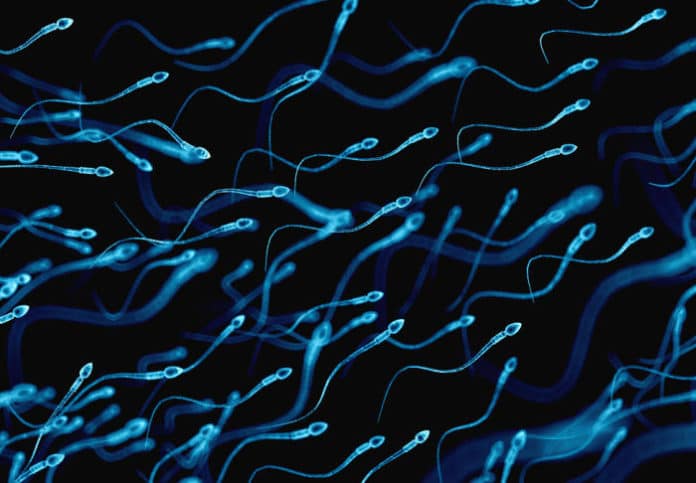Sperm counts have been steadily decreasing over the past five decades with regional differences in the Western world. In the case of Swiss men, no study has yet evaluated their reproductive health. So, scientists at the University of Geneva (UNIGE), Switzerland, with other institutions and with logistical support from the Swiss army, have for the first time assessed the semen quality of men between the age of 18 and 22.
The study was conducted on 2523 young men coming from all regions of Switzerland, recruited during military conscription. Semen volume, sperm concentration, motility, and morphology were analyzed. Participants completed a questionnaire about their health, lifestyle, diet, and education.
Their parents also were surveyed about their own lifestyle, diet, health and the course of the pregnancy. This was designed to assess the conditions under which gestation took place and to evaluate the possible impact on the reproductive health of the young men. Semen quality is defined by three important parameters: the sperm concentration (number of sperm per ml), their motility and morphology.
Rita Rahban, a researcher in the Department of Genetic Medicine and Development and the study’s first author said, “Low semen parameters values can reflect a men’s fertility when a combination of values are low, a man’s ability to conceive is at risk.”
Sperm counts vary from one country to another, with median concentrations ranging between 41 to 67 million per ml for young European men. By way of comparison, Swiss men with 47 million per ml are at the bottom of the pack alongside Denmark, Norway, and Germany.
The results of the study indicate that 17% of young men had a sperm concentration below 15 million per ml and 25% had less than 40% motile spermatozoa in their ejaculate. The rate of morphologically normal forms was below 4% in 40% of the subjects.
Dr. Alfred Senn, an andrologist and co-author of the study said, “We need to be cautious about single semen analysis. It isn’t entirely predictive of a person’s fertility. But, in overall terms, the results suggest that the sperm quality of young men in Switzerland is in a critical state and that their future fertility will in all likelihood be affected.”
However, scientists did not identify variations in sperm quality between Switzerland’s various geographical regions, linguistic areas, as a proxy for different lifestyle factors. In addition, scientists did not find any difference between urban and rural regions.
Serge Nef, a professor in the Department of Genetic Medicine and Development in UNIGE’s Faculty of Medicine said, “Subfertility was found to be more common among men who were exposed to maternal smoking during embryonic development.”
Is there a link between sperm quality and testicular cancer?
Scientists also identified if there is a relation between poor semen quality and increased testicular cancer. Incidence trend analysis was performed on testicular cancer data obtained from the National Institute for Cancer Epidemiology and Registration (NICER), which combines data from cantonal cancer registries.
Professor Nef said, “For 35 years, testicular cancer has grown steadily to over 10 cases per 100,000 men, which is very high compared to other European countries. Sperm quality is generally lower in countries where the incidence of testicular cancer is high. This is almost certainly the result of altered testicular development at the fetal stage, prompting the scientists to further investigate this area.”
Rita Rahban, a researcher in the Department of Genetic Medicine and Development said, “We would also like to go back to the 2,523 men who took part in the study in about 10 years so we can follow up their reproductive health and find out whether they have had children or have suffered from testicular cancer, for example.”
Dr Alfred Senn, an andrologist and co-author of the study said, “With the current trend for couples to have children later in life, the low sperm count among young men in Switzerland – combined with the declining fertility of older women – will have an impact on conception rates and future generations. This will lead to significant social and financial challenges for our society.”
This research is published in Andrology.
